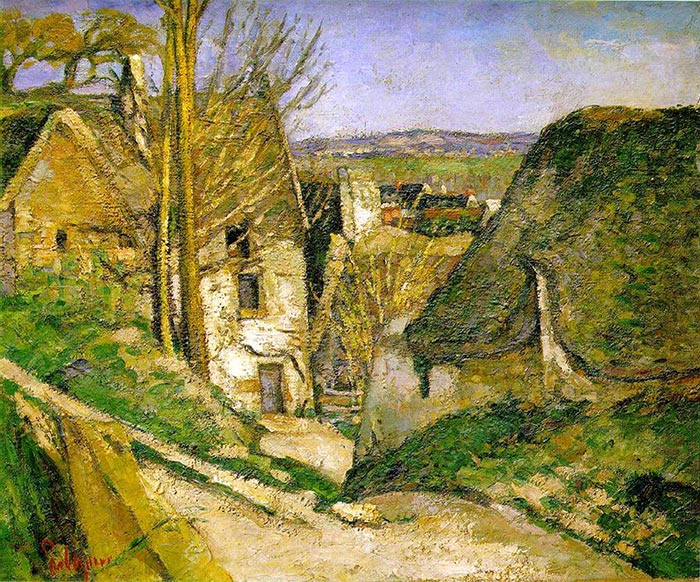The Hanged Man’s House The story behind the painting The Hanged Man’s House (The House of the Suicide) was painted by Paul Cézanne in a small town north of Paris, Auvers-sur-Oise. It illustrated his conversion to Impressionism as he used the pale colours and broken brush strokes to this painting. Gone are the dark colours, this painting shows a different characters from his earlier works. The painting also shows a change in subject matter, such as his chosen theme as well as the techniques. Despite his debbling in the world of Impressionism, he put some unique touches that set his paintings apart from other artists. It is shown in the complexity of the composition along with it’s characteristics. There is no single strong focal point, instead several paths moved in different directions, encouraging the viewers eye to follow it’s path when one looks at the painting. The painting depicts a picturesque cottage situated in Auvers near the Rue de Four. It also depicts a landscape devoid of human presence, an abandoned and isolated place, with cracked walls. The branches of the trees and starkly angling off to the top, depict a sense of confusion. The brush strokes are broken. It is thicker than the standard, showing an overall impression of having been plastered with paint. The lack of people, the village, the stiff, and the cool colours in the painting seems utterly deserted – perhaps creates a strong sense of solitude. The Hanged Man’s House was exhibited at the First Impressionist Exhibition which is held in 1874, a year after the painting was created. Today, it is on display in Paris at the Musée d’Orsay, Paris, France, alongside with Cézanne’s other great artworks. Title: The Hanged Man’s House Artist: Paul Cézanne Date: 1873 Style: Impressionism Period: Impressionist period Genre: Landscape Oil on Canvas
